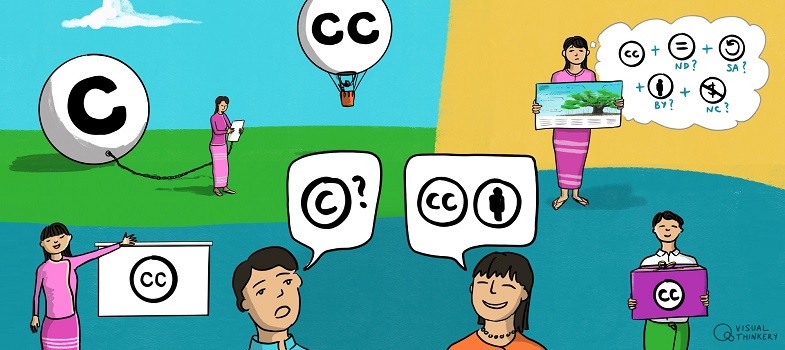Licence versions
As we saw earlier, there are different versions of CC licences. Not to be confused with the different types of licences described in Section 3.3, the licence version number simply represents when that particular version of the legal code was written.
CC improves its licences through the process of versioning, which is the process by which we update the legal code to better account for changes in copyright law and technology, and the needs of reusers. While there are some differences between licence versions, the different versions are largely the same in practical effect. The latest version of the CC licence suite is version 4.0, [Tip: hold Ctrl and click a link to open it in a new tab. (Hide tip)] which was published in 2013. Details on what updates were made to the licences in version 4.0 can be found on the CC wiki. For the most definitive and comprehensive view of how the licences have changed from Version 1.0 to the present, including all changes to the attribution and marking requirements, visit the Creative Commons website.
One important difference between the newest version of CC licences (version 4.0) and prior versions relates to violations of CC licence terms. Version 4.0 CC licences enable a licensee who has broken the terms of a licence (for example, if they forgot to attribute) to have their right to use that resource reinstated if they correct the violation within 30 days. You can find out more about this in the section ‘30-day window to correct licence violations’ on the What’s New in 4.0 page on the CC website.
Another major difference is that prior to version 4.0, Creative Commons gave permission to the CC Global Network to ‘port’ the Creative Commons licences. Porting involved linguistic translation and adjustments so that the licences reflected local terminology and drafting protocols, and accounted for other local differences, such as the existence of moral rights and collecting societies.
One of the primary reasons for versioning the licences from 3.0 to 4.0 was to eliminate the need for porting, an unnecessarily complex process that could be eliminated if CC took proper care to ensure the new licences were internationalised. Starting with version 4.0 (the most recent version of the CC licence suite), CC no longer ‘ports’ the licences. The ported licences of previous versions may still be used and remain legally valid and enforceable; however, Creative Commons discourages their use and recommends version 4.0 as the latest and most up-to-date thinking of CC and its global network.
Ported versions of the licences are different to the official translations of CC licences. The latest versions of all CC legal tools may be translated into official versions in other languages. You can find out more about translation of CC licences in the additional resources section.
In all cases, it is recommended by CC that creators use the latest version of the licences, as it reflects the latest thinking of Creative Commons and its global network of legal experts. Remember that some platforms where you can share your resources require you to apply particular licences: for example, the image-sharing platform Flickr uses the 2.0 version of CC licences).
The legal enforceability of CC licences
